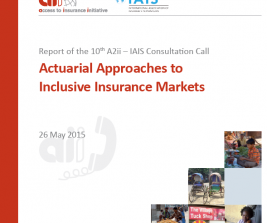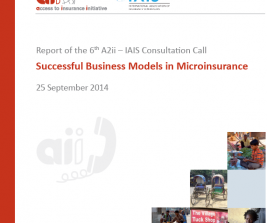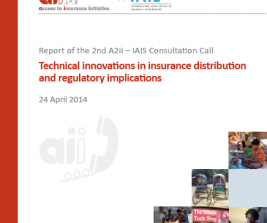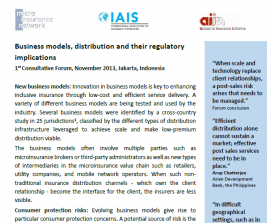One of the aims of the cross-country synthesis exercise is to gain a better understanding of the dynamics, development and evolution of microinsurance markets. Identifying discrete microinsurance business models allows the roles and incentives of the players involved in the provision of microinsurance to be disaggregated so as to better understand the way that the microinsurance market evolves across countries and to gauge the risks involved. Business models give rise to a number of consumer protection risks. Understanding which business models prevail in specific markets thus also results in a greater understanding of the kind of risks that predominate. Once the risks are identified, the analysis considers what the drivers of the specific risks are, as well as the regulatory implications of the business models. From this, appropriate regulatory responses can be designed for individual markets.
Business Models
Categories
Business Models
Back to Business Models





Reports, Business Models, Global | 2014
Evolving Microinsurance Business Models and their Regulatory Implications
Related Events
The IAIS and Microinsurance Network, supported by A2ii, organized a Consultative Forum to provide a platform for public-private dialogue. The first forum focused on microinsurance business models, distribution and regulatory implications and was attended by more than 100 participants from 40 countries.
Given the typically low margins on low value policies, most successful microinsurance business models innovate distribution channels in order to minimise distribution costs and scale up the number of policies sold, either by leveraging groups or the infrastructure and reach of aggregators. These new ways to sell insurance typically result in long distribution chains involving a variety of entities and their employees, some of which may not traditionally be regulated by the insurance supervisor. Therefore some microinsurance business models entail a greater degree of separation between the insurer and the client than under the traditional individual sales model. This leads to the emergence of consumer protection risks that are particularly prevalent in microinsurance.
The participants in Kigali discussed inclusive insurance business models serving low-income market segments in Africa. As an introduction to the topic, Munich Re gave an overview of microinsurance in
Related Documents
Technical Note 1: Evolving microinsurance business models and their regulatory implications
Also in Business Models

Presentations, Reports, Business Models, Global | 2015

Reports, Business Models, Global | 2014

Presentations, Reports, Business Models, Global | 2014

Reports, Business Models, Global | 2014

Reports, Business Models, Asia-Pacific | 2013



